
Quantum Hall effect 'reincarnated' in 3D topological materials
U.S. and German physicists have found surprising evidence of a link between the 2D quantum Hall effect and 3D topological materials that could be used in quantum computing.

Quantum Hall effect 'reincarnated' in 3D topological materials
U.S. and German physicists have found surprising evidence of a link between the 2D quantum Hall effect and 3D topological materials that could be used in quantum computing.

Early Bird uses 10 times less energy to train deep neural networks
Rice engineers have found a way to train deep neural networks for a fraction of the energy required today. Their Early Bird method finds key network connectivity patterns early in training.
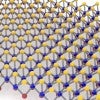
2D sandwich sees molecules with clarity
A 2D platform of molybdenum, sulfur and selenium is adept at detecting biomolecules via surface-enhanced Raman spectroscopy. Its nonmetallic nature helps by curtailing background noise.
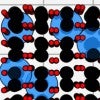
2D oxide flakes pick up surprise electrical properties
Rice University researchers find evidence of piezoelectricity in lab-grown, two-dimensional flakes of molybdenum dioxide.
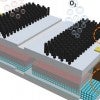
Water-splitting module a source of perpetual energy
Rice University researchers have integrated high-efficiency solar cells and electrode catalysts into an efficient, low-cost device that splits water to produce hydrogen fuel.

Graduating Mellon Mays fellows grateful for opportunity — and the Rice mentors who helped
Increasing diversity in the faculties of colleges and universities across the U.S. is the mission of the Mellon Mays Undergraduate Fellowship (MMUF) program, which has helped fund the doctoral dreams of over 5,000 students at 48 member schools since 1986.
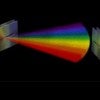
Researchers solve 'link discovery' problem for terahertz data networks
When you open a laptop, a router can quickly locate it and connect it to the local Wi-Fi network. That ability, known as link discovery, is a basic element of any wireless network, and now a team of engineering researchers from Rice University and Brown University has developed a way to do that with terahertz radiation, the high-frequency waves that could one day make for ultrafast wireless data transmission.
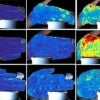
PulseCam peeks below skin to map blood flow
Rice University engineers have found a way to use a video camera to peek below the skin and make high-resolution maps that show doctors and nurses exactly how much blood is reaching the capillaries.

Rice researchers: Help us understand COVID-19's impact
Two groups of Rice University researchers are asking for the public's help to better understand how the COVID-19 pandemic and social distancing policies are impacting people's lives, livelihoods and mental well-being.
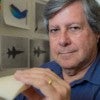
Spacecraft is designed to survive fire, surfs its own wave
Patrick Rodi's new idea for surfing is far out, fast and white hot.


Rice researchers create interactive map of COVID-19 cases in Texas
A team of researchers in the Center for Research Computing’s Spatial Studies Lab at Rice University has created an interactive map showing all cases of COVID-19 across Texas utilizing public health data. The map is now online at coronavirusintexas.org.

Machine learning can help increase liver cancer screening rates, says Rice expert
Targeting patients with machine learning can increase the number of people getting liver cancer screenings, according to a National Institutes of Health-sponsored study by a research team from Rice, Texas A&M University, Iowa State University and the University of Texas Southwestern Medical Center.
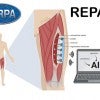
'Smart' wound-healing patch: DARPA awards $22 million grant
Rice University engineers are part of a team that's developing an 'intelligent' bandage to regrow muscle tissue for wounded soldiers.
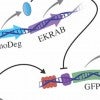
Strong signals show how proteins come and go
Rice University bioscientists develop a versatile gene signal amplifier that can not only do a better job of detecting the expression of chromosomal genes than current methods but can potentially be used to detect any cellular gene.